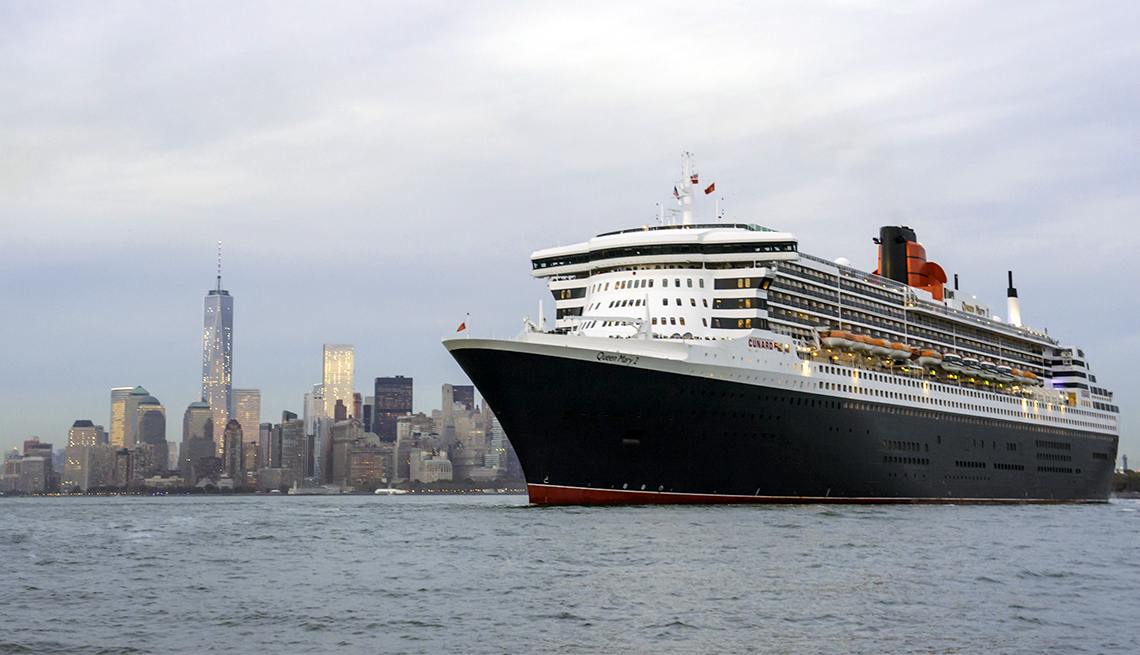© 2025 AffordableJourney. Built with care by our team. All rights reserved.
From London to New York by Ship—Why I Chose the Ocean Over the Air
By Jessica Monroe
A slow, mindful journey that changed the way I see travel.
The Decision: Why I Said No to the Sky
There’s a certain expectation in our modern world that long-distance travel means boarding a plane. It’s efficient, fast, and—if you ignore the cramped seats and questionable meals—fairly straightforward. But when I decided to visit New York from my home in London, something inside me resisted the idea of a seven-hour transatlantic hop.
Maybe it was the pandemic years that made me crave slowness. Maybe it was the romantic in me who had grown up on stories of ocean liners, Titanic dramas aside. Or maybe, if I’m honest, it was just the fatigue of airports—the endless queues, security checks, gate changes, and the dry recycled air that seems to steal the joy out of arriving somewhere new.
So I asked myself: What if the journey itself was the destination?
That’s how I found myself looking up transatlantic sailings, specifically the storied route from Southampton to New York. The ship I booked wasn’t a luxury yacht or a private charter—it was one of the last remaining passenger liners still making this crossing as a matter of course. It wasn’t cheap, but it wasn’t wildly more than a flight plus several nights in a decent hotel. And the value was in the experience, not just the transportation.
Friends thought I was eccentric. “It’s a week of your life just to get there,” one said, shaking their head. But that was the point. I didn’t want to just get there. I wanted to savor the feeling of traveling across an entire ocean, to watch the slow shifting of skies and seas, to feel the distance in my bones rather than simply read it on a boarding pass.
When the ticket confirmation landed in my inbox, I felt the same flutter I imagine travelers felt a century ago: the anticipation of something grand, uncertain, and full of stories waiting to happen.

Day One: The Pull Away from Shore
Boarding in Southampton was nothing like rushing through an airport terminal. The check-in process was unhurried, almost ceremonious. Porters in neat uniforms took my bags, and I stepped onto the ship with a sense of occasion. The decks gleamed in the weak English sunlight, and the air smelled faintly of salt and fresh paint.
Sailing day felt like a festival. Families waved from the dock, cameras clicked, and the ship’s horn bellowed a deep, resonant farewell. As we slowly edged away from the harbor, I realized that I was grinning—actually grinning—at the sight of land receding into the distance. It was a feeling I hadn’t had on a plane in years, that electric mix of excitement and the awareness that something irreversible had begun.
The first few hours were a blur of exploring. I found the observation deck, the library, the elegant dining rooms with crisp white tablecloths. My cabin, while modest, had a porthole that framed the sea like an ever-changing painting. I couldn’t stop staring at it, mesmerized by the churn of waves against the hull.
That night, I stood on deck as the sky darkened into a deep velvet. The stars came out slowly, at first just a few scattered points, then a whole galaxy spilling across the horizon. Without city lights to compete, they were sharp and brilliant. I realized I could hear the sea, not just see it—the rhythmic hiss of waves, the deep undertones of the ship’s engines.
It was the beginning of something I hadn’t felt in a long time: presence. There was no rush to arrive, no constant checking of the time. The ocean was in no hurry, and neither was I.

Life at Sea: The Rhythm of Slow Travel
By the second day, the ship had settled into its ocean rhythm, and so had I. The daily program was filled with activities—lectures on maritime history, watercolor classes, ballroom dance lessons—but I found myself gravitating toward simpler pleasures. I’d take my morning coffee out to the deck, wrap myself in a blanket, and watch the horizon shift shades as the sun climbed.
Meals were an event in themselves. In the grand dining room, I shared tables with fellow travelers from all over the world—retirees fulfilling a lifelong dream, students heading to internships in New York, artists seeking solitude. Conversations meandered from politics to books to the peculiarities of British tea. There was a camaraderie in knowing we were all sharing the same patch of ocean, suspended between two continents.
One of my favorite rituals was the daily walk on the promenade deck. Three laps equaled a mile, and it became my meditative practice. Some days were calm, the sea flat and shining like liquid glass. Others were rough, with waves crashing high enough to spray the railings. Either way, there was a kind of liberation in knowing the ship kept moving, day or night, through whatever the Atlantic threw at us.
I noticed something remarkable happening by the third day: my mind began to slow down. At home, I’m the type who flips between tabs, refreshes email, checks the news. Out here, with no internet unless I paid exorbitantly for it, I stopped reaching for my phone. Instead, I reached for my journal, for my book, for the binoculars I’d brought to scan the waves for signs of dolphins or seabirds.
The ship was its own little floating world, and time behaved differently here. Morning bled into afternoon without the pressure of deadlines. Evenings unfolded in long, lingering dinners, followed by music in the lounge or a quiet drink under the stars. The absence of hurry wasn’t just relaxing—it was transformative.
![]()




